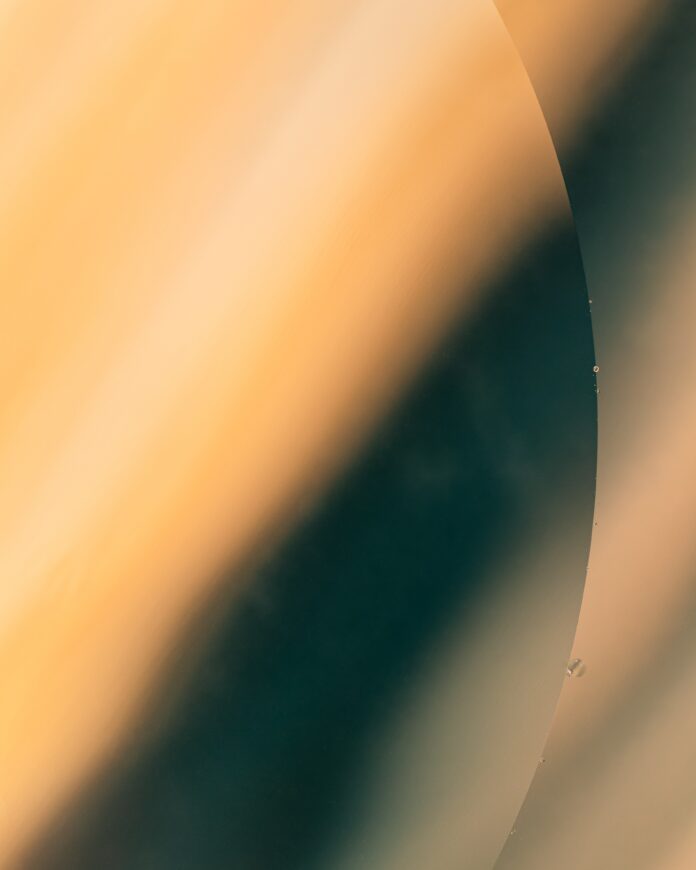Forecasting: Understanding the Art and Science of Anticipating the Future
In a world characterized by uncertainty and rapid change, the ability to predict future events is a coveted skill that has profound implications for business, economics, science, and everyday life. This art of anticipation is known as forecasting – a discipline that merges both the realms of art and science to provide insights into what lies ahead. Forecasting involves the use of historical data, statistical models, and domain expertise to make informed predictions about future trends, behaviors, and occurrences. It’s a process that goes beyond mere guesswork, delving into the realm of systematic analysis to bring a semblance of order to the chaotic nature of the future.
At its core, forecasting is a complex blend of data analysis, mathematical modeling, and pattern recognition. It is a quest to decipher the underlying dynamics of various phenomena and use that understanding to project how they might evolve over time. In a world driven by the pursuit of informed decision-making, the ability to make accurate forecasts holds immense value. Whether it’s businesses trying to anticipate consumer demand, meteorologists predicting weather patterns, economists estimating market trends, or epidemiologists projecting disease outbreaks, forecasting plays a pivotal role in shaping strategies and influencing outcomes.
Forecasting is not merely a modern construct; it has been an integral part of human history. From ancient civilizations trying to predict celestial events to farmers using natural cues to determine planting seasons, the inclination to predict the future has always been ingrained in human nature. However, as societies evolved and information became more abundant, the methods and techniques used for forecasting also underwent a transformation. Today, forecasting has become a sophisticated field that draws from multiple disciplines, including mathematics, statistics, computer science, economics, and domain-specific knowledge.
The fundamental principle that underlies most forecasting endeavors is the assumption that there are recognizable patterns and relationships in historical data that can guide us in making predictions about the future. These patterns can range from simple trends and seasonal variations to more complex interactions between multiple variables. The process typically involves collecting and analyzing relevant data, identifying patterns, developing mathematical models, and using these models to generate forecasts. It’s important to note that while forecasting can provide valuable insights, it’s not a crystal ball that guarantees accuracy. Uncertainties, unexpected events, and changes in underlying dynamics can all lead to deviations between forecasts and actual outcomes.
In essence, forecasting is a powerful tool for informed decision-making, risk management, and strategic planning. It enables businesses to allocate resources effectively, governments to plan for infrastructure development, and individuals to make better personal choices. However, it’s crucial to approach forecasting with a clear understanding of its limitations and potential pitfalls. As the famous statistician George E. P. Box once said, “All models are wrong, but some are useful.” This statement encapsulates the essence of forecasting – while no prediction can be absolutely perfect, the insights gained from the forecasting process can still provide valuable guidance and enhance our understanding of the world.
In the following sections, we will delve deeper into the various aspects of forecasting, exploring its methodologies, challenges, and real-world applications. From time series analysis and causal modeling to the impact of technological advancements on forecasting, we will journey through the landscape of this intriguing discipline. By the end of this exploration, it is hoped that you will have gained a comprehensive understanding of how forecasting shapes our world and equips us with the tools to navigate the uncertain seas of tomorrow.
In the realm of predictive analysis, forecasting emerges as a guiding light, illuminating the obscured corridors of the future. Its significance reverberates across industries, from economics to natural sciences, and from marketing to healthcare. The concept of forecasting, while rooted in data-driven methodologies, transcends the mere manipulation of numbers. It embodies the intricate interplay between empirical evidence and human intuition, melding the tangible with the abstract to paint a plausible portrait of what lies ahead.
To embark on a journey through forecasting is to delve into the amalgamation of past occurrences and future possibilities. At its heart lies the notion that patterns unveiled in historical data can be extrapolated into the unknown, aiding us in understanding the dynamic forces shaping our world. This process, however, is far from linear. It involves peering into the often chaotic maelstrom of data points, seeking the underlying threads that weave together the narrative of change. From the stock market’s tumultuous fluctuations to the delicate balance of ecosystems, forecasting seeks to decipher the whispers of causality that echo through time.
Historically, human civilizations have sought ways to decipher the enigma of tomorrow. Early societies looked to celestial bodies for hints, attributing celestial events to divine omens. With the advent of systematic record-keeping, the practice evolved into a more empirical endeavor. Agriculture, a cornerstone of human survival, became deeply intertwined with forecasting. The emergence of seasonal cycles and weather patterns became vital cues for planting and harvesting. These rudimentary yet essential predictions enabled societies to adapt and thrive in harmony with their environment.
As the world progressed, so did the complexity of forecasting. The rise of statistical methods brought forth a new dimension. Patterns, once elusive, could now be quantified and modeled, paving the way for more sophisticated predictions. Economists, seeking to navigate the turbulence of markets, turned to quantitative analysis. Time series data became a treasure trove of insights, allowing for the identification of trends and seasonal variations. This not only facilitated a deeper understanding of market behavior but also offered a glimpse into the broader socioeconomic landscape.
The intricacies of forecasting also extend into the realm of human behavior. Psychologists and sociologists, armed with data-driven insights, attempt to predict consumer trends and social shifts. By examining historical data, they unearth patterns that hint at the collective psyche, informing marketing strategies, public policies, and cultural adaptations. The human factor, often unpredictable and enigmatic, adds a layer of complexity to forecasting that transcends mere mathematical equations.
In the contemporary era, the surge of technological prowess has ushered in a new age of forecasting. The advent of big data and machine learning has granted unprecedented power to predictive models. Algorithms, capable of sifting through colossal datasets, distill intricate relationships that elude human perception. The fusion of computational might with domain expertise births a synergy that propels forecasting to new heights. Weather forecasts, once reliant on basic meteorological principles, now harness the might of supercomputers to simulate complex atmospheric interactions. The precision attained in these predictions stands as a testament to the evolving capabilities of forecasting methodologies.
However, in the midst of these advancements, forecasting remains tethered to the inescapable veil of uncertainty. The “black swan” events, outliers that defy the confines of predictive models, serve as stark reminders of the limits of foresight. Economic recessions, global pandemics, and geopolitical upheavals often emerge from the blind spots of even the most sophisticated predictive techniques. This underscores the crucial distinction between probability and certainty – while forecasting provides a glimpse into probabilities, it can never guarantee certitude.
Forecasting, as an intellectual pursuit, exemplifies the symbiotic relationship between knowledge and humility. It is a testament to human curiosity and the unyielding quest for understanding. Each forecast is a hypothesis about the future, subject to the scrutiny of time and reality. Whether it’s a business manager allocating resources, a city planner envisioning infrastructure, or a medical researcher anticipating disease trends, forecasting shapes decisions that ripple through time. And as the world hurtles forward, the art and science of forecasting will continue to evolve, adapting to the ever-changing landscape of information and technology.
In conclusion, forecasting transcends the boundaries of disciplines and industries, weaving together the fabric of past and future. It melds empirical evidence with mathematical rigor and human insight, creating a tapestry that guides decision-making and informs strategies. From ancient civilizations seeking cosmic hints to modern data-driven algorithms deciphering complex interactions, forecasting is an ever-evolving journey of understanding and exploration. It stands as a testament to humanity’s ceaseless pursuit of knowledge, an endeavor that seeks to illuminate the darkness of the unknown with the radiant torch of insight.
The art of forecasting unfurls like a tapestry woven with threads of data, mathematics, and human curiosity. It is a dance between the known and the unknown, an attempt to unravel the intricate patterns that underlie the chaos of existence. As we traverse the landscape of forecasting, we embark on a journey that traverses the boundaries of time itself, straddling the precipice between what has been and what may come to be.
At its core, forecasting is a marriage of science and intuition. It is the realm where data, meticulously collected and scrutinized, meets the realm of human insight. As the digital age bestows upon us a wealth of information, the tools of forecasting become more potent, capable of peering into the depths of historical trends and gleaning fragments of foresight. Yet, the human element remains irreplaceable. The gut feeling that a seasoned meteorologist gets when analyzing weather patterns, the instinct that guides an investor in a fluctuating market – these elements of intuition infuse the cold calculations of data with a touch of warmth, elevating forecasting to an art form.
The history of forecasting is an epic tale of human endeavor. From the seafaring cultures that read the skies for signs of impending storms to the early economists who dared to predict market fluctuations, the human desire to foresee the future has been a constant companion. Ancient civilizations, often shrouded in mysticism, sought portents in the flight of birds, the alignment of planets, and the murmurs of oracles. These early attempts, steeped in superstition and ritual, laid the groundwork for a more systematic approach to prediction.
As time marched on, the quest for forecasting evolved from divination to calculation. The pioneers of probability theory, from Pascal to Fermat, introduced a rational framework for understanding uncertainty. The emergence of statistics in the 18th century paved the way for a more structured analysis of data. Sir Francis Galton’s work on regression and correlation unearthed the hidden relationships within data sets, providing a glimpse into the predictive power of statistical analysis. These foundational principles set the stage for the modern era of forecasting.
The advent of computers in the mid-20th century marked a turning point in the field. The computational horsepower offered by machines revolutionized the scale and complexity of forecasting. Meteorologists harnessed these newfound capabilities to create intricate models of weather systems, ushering in the era of numerical weather prediction. The ripples of this technological surge spread across disciplines, with economics, epidemiology, and social sciences all benefiting from the computational prowess that forecasting could now wield.
The digital age, characterized by the deluge of data and the rise of artificial intelligence, has further reshaped the landscape of forecasting. Big data, a term that encapsulates the colossal amounts of information generated by our interconnected world, has become the bedrock upon which predictive models thrive. The convergence of massive datasets, machine learning algorithms, and domain expertise has led to unprecedented accuracy in various forecasting domains. From Google’s Flu Trends using search data to predict disease outbreaks to recommendation systems tailoring content to individual preferences, the power of forecasting is harnessed daily, often without conscious recognition.
Yet, for all its sophistication, forecasting is not devoid of challenges. The seductive allure of overfitting, where models become too finely tuned to historical data, can lead to inaccurate predictions when confronted with the unpredictable nature of reality. The intricacies of human behavior, driven by emotions and impulses that defy quantification, continue to elude comprehensive prediction. The very act of forecasting can sometimes influence outcomes, as individuals and institutions adjust their behavior based on projected trends.
The broader ethical dimensions of forecasting also beckon consideration. The potential misuse of predictions, the implications of deterministic thinking in a world inherently uncertain, and the ethical responsibilities of those wielding forecasting tools all intertwine in a complex web. Striking the balance between leveraging the insights gleaned from forecasting and acknowledging the limits of its power is a tightrope act that requires constant reflection.
As we peer into the future, it’s essential to recognize that forecasting is a tool, not a crystal ball. It is a lens through which we can view possible trajectories, a compass that points to likely directions. The beauty of forecasting lies not in its infallibility but in its potential to illuminate the unknown. It provides a structured framework for approaching uncertainty, guiding decisions and strategies with a blend of empirical evidence and human wisdom.
In the grand tapestry of human intellectual pursuit, forecasting stands as a testament to our audacity to bridge the chasm of the future. It marries the analytical rigor of mathematics with the nuanced understanding of human behavior, inviting us to grapple with the complexities of existence. With each forecast, we engage in a delicate dance between knowledge and humility, between the known and the unknowable. As we traverse the continuum of time, we carry with us the torch of forecasting, illuminating the uncharted territories that lie ahead.


















